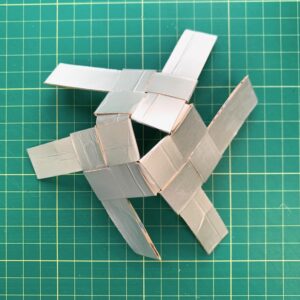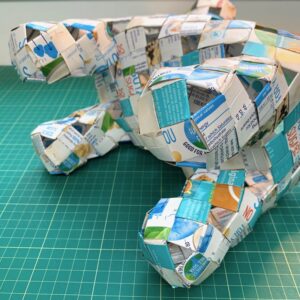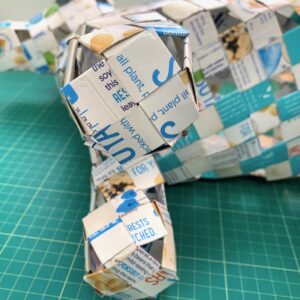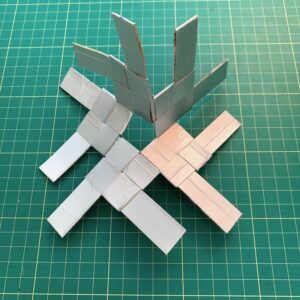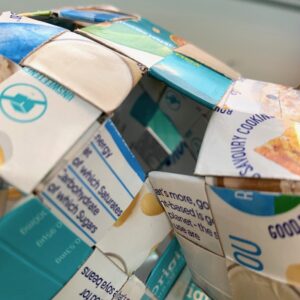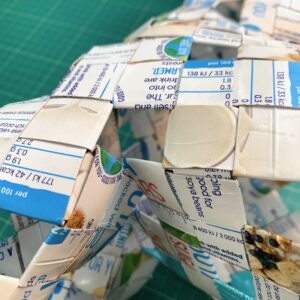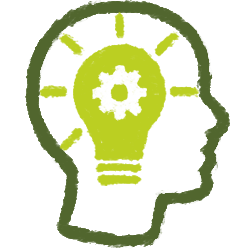Tedi, the Windmill Loop Dog
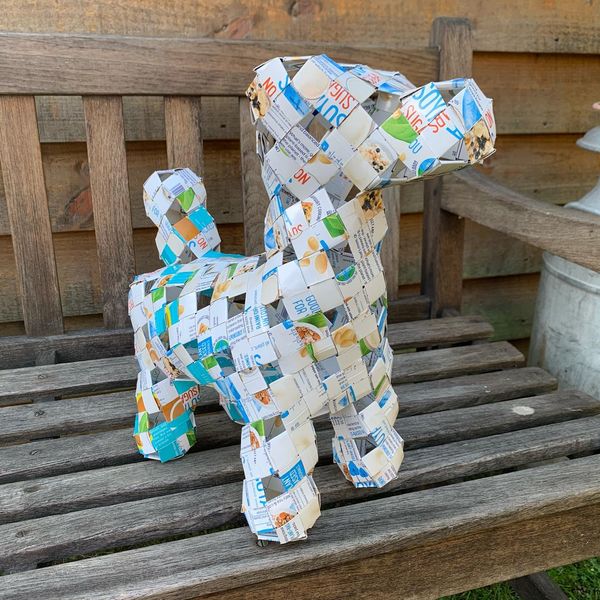
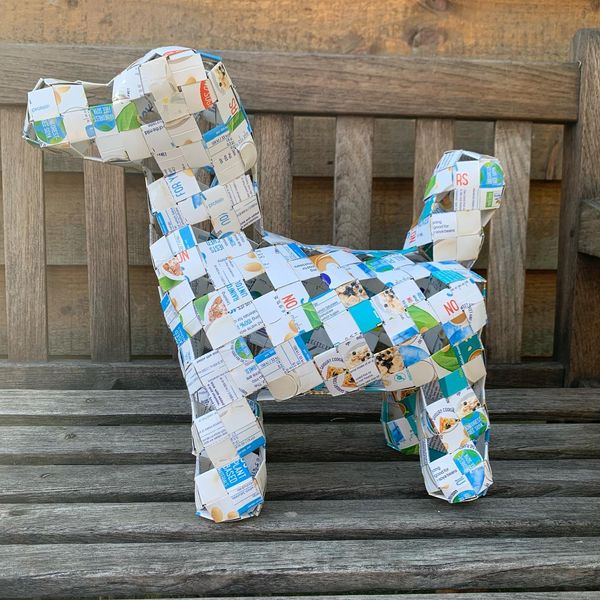
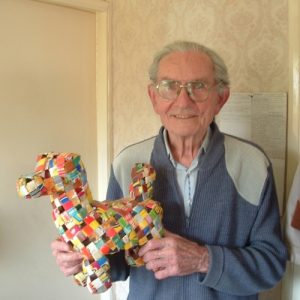
Colin Fleming, 2011. Has produced an instruction booklet.
After the Studio Trials (Windmill Knot weave), I became interested in windmill weave and wanted to explore more. I was reminded of a small pack of instructions I had come across and purchased. It was for Mack the Scottie from the Isle of Wight, written by Colin Fleming. Mack is a windmill loop weave dog, inspired by the cigarette packet dogs familiar to Colin from his father’s stories of his time in the Royal Marines and visits to Malta, where sailors would take their cigarette packets ashore to be woven into objects, including animals. There are some examples of vintage cigarette packets dogs, still to be found in museum collections, see Beamish: People’s Collection.
I find stories about people inspiring, and was intrigued to make my own windmill weave dog. I rarely work from instructions, preferring to explore and find out for myself as I work, but decided I would at least follow Colin’s design in terms of form, so that the finished dog would take the form of Mack.
Windmill loop weave, is not surprisingly formed with loops. I chose to work in cereal boxes and recycled tetrapaks, so prior to starting to weave time was spend preparing the loops to specific dimensions. The dog is not flat, so different turns or corners had to be mastered. The flat weaving, which can be manipulated to create a curve uses four elements, or loops for each unit. Units are connected together to weave a surface.
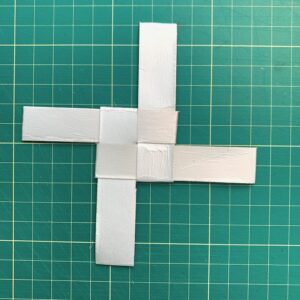
Windmill loop weave, one unit, four elements
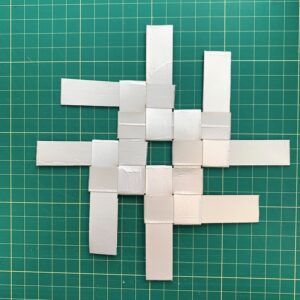
Windmill loop weave, four units.
Corners, both with positive and negative curvature can be made using variations on the flat surface weave. Using three units of the weave, the surface could be considered to push away. The opposing surface uses five units. Both corners change the hole formed by the weave from four sided, to three of five sided. The three sided holes always seem to take the same form, it is solid and rigid, so offers no movement or manipulation.
The five sided corners offer more possibilities and are used in a variety of positions over the surface of the dog. The corner flexes with the tension of the weave. The joints of the corner move like hinges. Unlike the three sided corners, where a triangle can be seen on a plane (as an equilateral triangle), the five sided corner does not always retain a planar quality (having the appearance of a regular pentagon), sometimes contorting to form a three sided square with a lifted fifth point created by the other two sides.
Although at first glance the making of Mack, did not appear to be difficult, the make offered some unexpected challenges. As I mentioned before, I don’t in general make from a kit. Colin’s instructions were detailed with black and white images, drawings and a large quantity of text in explanation. I am a visual and kinaesthetic learner, so I dived straight in by looking at the diagrams and photographs, but mostly I like to learn by doing. My first attempt used cereal packets which I quickly found were soft in quality and did not lend themselves to being undone. Having worked my way from the body to the back legs, I found a problem. The dog has to be build from a point or points on the surface which enable continuous weaving, in other words, you can’t fill a hole!
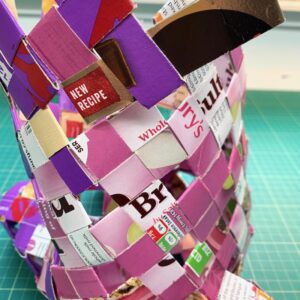
Trial dog, woven in cereal packets.
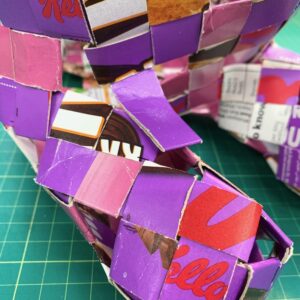
Trial dog, beginners error!
Later reading of Colin’s notes, I found that Colin suggested weaving from the base of the feet, so starting with the legs. Starting again, this time with recycled tetrapaks, I successfully wove I complete dog. It was satisfying that the dog seemed to have a character of its own, so in honour of Geraldine’s dog, who sometime attends online meetings, my dog is named Tedi.
Mary Crabb, UK
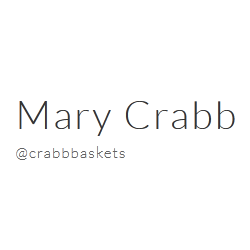
PROFILE
Maker and tutor of objects – woven, constructed, stitched…..
At the beginning of 2020 she joined Forces in Translation, an inspiring group of people to work together to develop, explore and share their specialities in basketry, maths and anthropology.
Main Research Source
- Forces in Translation(03/03/2021)
I was very interested to read about Mary Crabb’s trials and results from instructions about how to weave a windmill loop dog as well as more information about the history of these dogs – of sailors saving cigarette packets and taking them ashore in Malta to be woven into a variety of objects.

